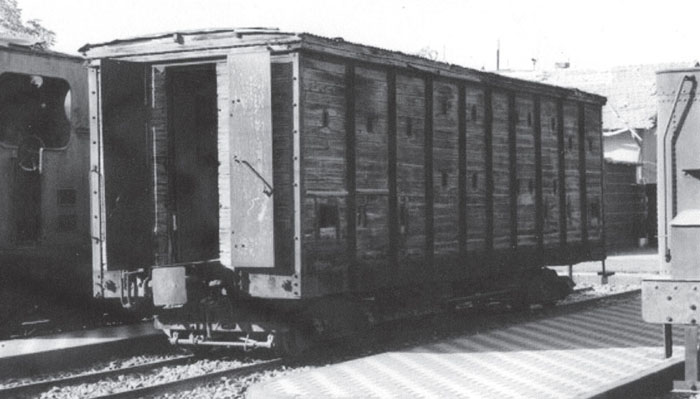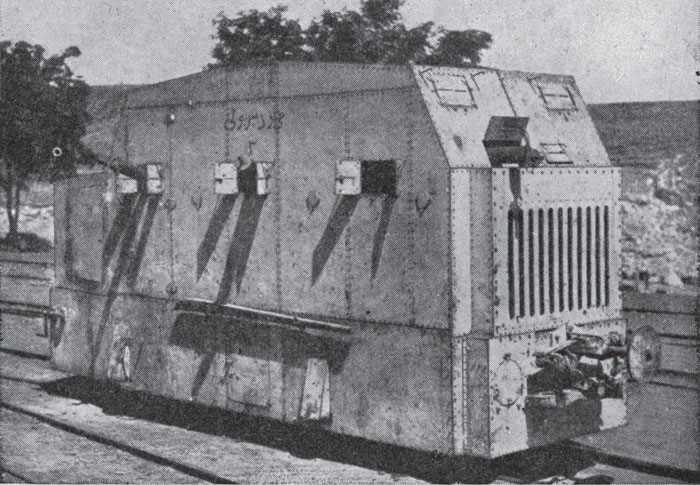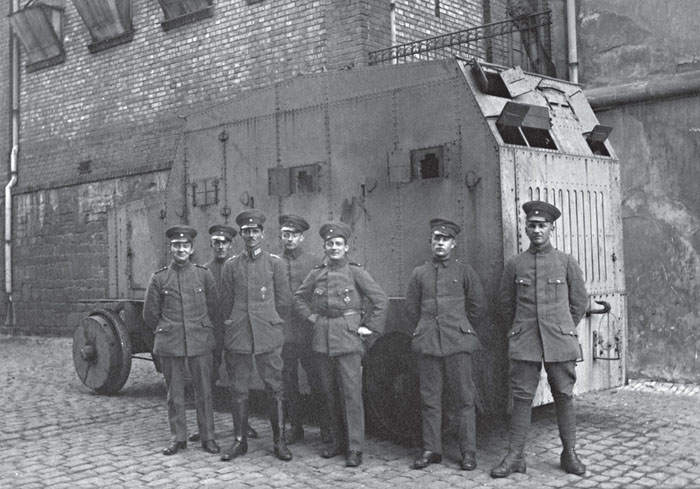
When Turkey allied with Germany during the First World War, the greatest threat to railway transport came from the Great Arab Revolt of 1916–18. The writings of Lawrence of Arabia detail attacks on Ottoman trains, but do not specifically mention armoured trains. However, it is certain that armoured trains were used by the Turks,2 despite the fact that apart from the possible exception of the armoured wagon preserved in Syria, no photos have come to light.
In late 1917, French forces identified three armoured trains3 at Medina, Boueir and Heddja. In addition, in almost all the stations, an armoured wagon (protected by iron plates or sandbags) was coupled to an engine with steam up, ready to intervene at any trouble spot.
In the same period armoured trolleys intended for the Middle East were built in Germany, although some were never delivered. At least two of these machines were captured by the Allies, one of which was in use hauling a train. The armoured bodies of two machines were converted by the French into armoured caissons mounted on flat wagons (see the chapter on France).
SOURCES:
Archives:
SHD: 4 H 27, Fonds Clémenceau, 6 N 191.
Books:
Strasheim, Rainer, Panzer-Kraftwagen, Armoured Cars of the German Army and Freikorps, Tankograd-World War One No 1007 (Erlangen: Verlag Jochen Vollert, 2013), p 73.
Das Ehrenbuch des Deutschen Pioniers (Berlin: Verlag Tradition Wilhelm Kolf, 1931).

Armoured wagon on display in the Al Qadam Museum in Damascus. The origins of the wagon and the reason why it was constructed are unknown.
(Photo: All Rights Reserved)

Ottoman armoured trolley, left-hand side, with its crew. Some photos show a German crew from the Asien-Korps commanded by Colonel von Oppen.
(Photo: Paul Malmassari Collection)
Three views of armoured trolleys, the lower one showing one of these machines coupled as a train locomotive. This was perhaps the type of rake known as an ‘armoured train’ in contemporary reports.
(Photos: Australian War Memorial)

Right-hand front quarter of the armoured trolley, seen here between Rayack and Damascus.
(Photo: Das Ehrenbuch des Deutschen Pioniers)

This example has been converted to a road vehicle (probably the only one of its type!) and used by the police in Weissefels near Leipzig, as well as in Zella-Mehlis near Suhl in 1919.4 It is likely that the rear of the armoured body has been reversed and has become the front end of this road version.
(Photo: Jochen Vollert)
1. The Ottoman Empire was abolished on 1 November 1922.
2. For example a coded message dated 10 November 1917 indicated a Turkish armoured train in combat on 12 and 13 October 1917 on the line from Antar to Boueit (Hedjaz). (SHD: 6 N 191)
3. SHD: 4 H 27.
4. Zone of activity of the Freikorps of General Märkers, which later became the 16th Brigade of the Reichswehr.